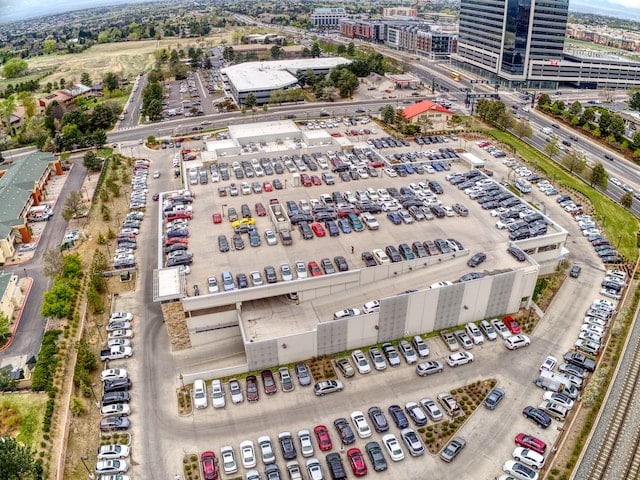
The “used car average price” has become a focal point for consumers and industry experts alike, given the current dynamics of the automotive market. According to Cox Automotive’s report from June 16, 2023, the average listing price for used vehicles has climbed past the $27,000 mark. This article will delve into the implications of this increasing price trend, along with how varying inventory levels and evolving sales patterns affect the used car average price.
Inventory and Market Overview
Cox Automotive’s data revealed that at the end of May 2023, there were 2.19 million unsold used vehicles in U.S. dealerships. While this reflects a slight increase from the 2.11 million in April, it’s an 11% decrease from the same period the previous year. The average used vehicle listing price has been steadily rising, culminating at $27,256 at the end of May, the highest since January.
Rising Car Loan Rates and Their Impact on the Used Car Market
Car loans, particularly in the used car market, have seen increasing rates, making loans more expensive and potentially dampening sales due to persistently high vehicle prices. Alongside this, qualifying for car loans has become more difficult compared to a year ago, reflecting the challenges with affordability in the vehicle market.
In May, the average rate on new car loans stood at 7.1%, an increase from the 5.1% recorded last year, according to data from Edmunds.com. The rates for used car loans were even higher, with the average loan carrying an 11% rate, up from 8.2% the previous year.
The rates for car loans typically track the five-year Treasury note, which is influenced by the Federal Reserve’s key rate. However, this isn’t the only factor that determines the cost of a car loan. Aspects such as a borrower’s credit history, the type of vehicle, the term of the loan, and the down payment also play significant roles in determining the final rate for a car loan.
Impact of Sales Trends
The sales rate for used cars experienced healthy growth for most of May, albeit experiencing a dip towards the month’s end. This resulted in flat retail sales for May, compared to April, and an 11% year-on-year decline. It’s noteworthy that due to the reduced sales of new cars in recent years and a decline in leasing, there’s a high demand for newer used vehicles, which are in short supply. This imbalance has contributed to the rise in the used car average price.
Inflation In The Used Car Market

Inflation in the auto industry, particularly in the used car market, has proven stubborn due to a variety of factors. Following the coronavirus lockdowns, prices of both new and used vehicles have surged and remain high, two years into the U.S.’s worst inflationary episode since the 1980s. Several factors such as global shipping issues, semiconductor shortages, and factory shutdowns, coupled with strong demand, led to a sharp increase in vehicle prices in 2021 and early 2022.
Economists had anticipated a decrease in prices as supply chains recovered and interest rate hikes deterred borrowers. However, prices for new cars have risen even further, with domestic automakers producing fewer, more profitable luxury models. Used car prices, while they decreased late last year, rebounded in April due to high demand and limited supply.
The easing of the car price frenzy, which began in the second half of 2022 as more vehicles were produced, has been gradual. Automakers, aiming to maintain the profits brought about by the scarcity of vehicles, have discussed maintaining “discipline” in their production targets. Consequently, the inflationary pressure in the car market, particularly the used car segment, continues to impact consumers and the overall economy.
Navigating Used Car Loans: A Guide for Different Buyers
Disclaimer: The content provided in this article is for informational purposes only. It should not be considered as financial or investment advice. The information does not constitute a comprehensive or complete statement of the matters discussed or the laws relating thereto. You should always consult with a qualified professional or specialist before making any financial, investment, or tax decisions. Your use of this information is at your own risk, and the author and publisher disclaim any liability for any loss that may occur from using this information.
Understanding Key Factors in Determining Your Car Loan Rate
When securing a car loan, various factors come into play in determining the rate you’ll receive. Your credit history, the type of vehicle you choose, the term of the loan, and the down payment you can afford all play crucial roles in the final rate for your car loan.
Credit History: The Backbone of Your Loan Rate
Advice for First-Time Buyers:
If you’re a first-time car buyer, your credit history may be limited. Start building your credit by using a credit card responsibly or taking on a small loan that you can pay off regularly.
Advice for Repeat Buyers
Keep your credit score high by making timely payments, maintaining a low balance on your credit cards, and refraining from opening unnecessary new credit lines.
Vehicle Type: New vs. Used
Advice for Budget-Conscious Buyers
If you’re working with a tight budget, consider a used car. Loans for used cars often have higher rates, but the overall cost of the vehicle will be less. Be sure to factor in potential maintenance and repair costs.
Advice for Long-Term Buyers
If you plan to keep the car for a long time, a new vehicle might be a good option. New car loans usually have lower rates, and the car will likely have fewer maintenance issues early on.
Loan Term: Short vs. Long
Advice for Buyers Wanting Lower Monthly Payments
A longer loan term will result in lower monthly payments but will cost more overall due to the accumulation of interest.
Advice for Buyers Who Want to Pay Less Overall
If you can afford higher monthly payments, consider a shorter loan term. You’ll pay less interest over the life of the loan.
Down Payment: How Much to Put Down
Advice for Buyers with Limited Savings
Even a small down payment can have a significant impact on your loan rate and monthly payments. Save as much as you can before purchasing to reduce your loan amount.
Advice for Buyers with More Savings
The larger your down payment, the less you’ll need to borrow. This reduces your debt and could secure a lower interest rate.
Remember, each car buying experience is unique, and what works best for one person may not work best for another. Always take the time to research and plan before securing a car loan to ensure you’re making the best financial decision.
Used Car Market: FAQs

What is the average price of a used car?
The average price varies based on market trends, the model of the car, its age, mileage, and condition. Specific figures are often updated annually.
What trends influence the average price of used cars?
Trends influencing used car prices include supply and demand dynamics, new car prices, economic conditions, and even unforeseen events like the COVID-19 pandemic which disrupted supply chains.
How do costs vary for different makes and models?
Costs can vary significantly based on the brand, model, and year of the car. Luxury vehicles and those with higher reliability ratings tend to retain their value better.
Does the location impact the price of used cars?
Yes, location can have an impact on prices due to differences in demand, availability, and local economic conditions.
What are the significant costs to consider when buying a used car?
Apart from the purchase price, potential buyers should consider costs related to insurance, financing, maintenance, repairs, and fuel consumption.
How does depreciation affect the price of used cars?
Depreciation is a major factor in used car pricing. Cars depreciate at different rates depending on their make, model, and how well they are maintained.
What is the impact of mileage on the price of a used car?
Generally, higher mileage leads to lower prices due to wear and tear on the vehicle. However, other factors such as the car’s condition and maintenance history can also play a significant role.
How does the age of a used car affect its price?
Older cars typically have lower prices due to depreciation. However, classic or vintage cars may increase in value due to their rarity or demand among collectors.
Does the condition of a used car significantly affect its price?
Yes, a car that is in excellent condition, both mechanically and aesthetically, will generally command a higher price than one with noticeable damage or mechanical issues.
How does financing impact the final cost of a used car?
Financing can significantly increase the final cost due to interest payments, particularly if you have a higher interest rate or longer loan term.
How do seasonal trends affect the used car market?
Certain times of the year, like spring and summer, often see a higher demand for used cars, potentially leading to increased prices.
How do recalls or consumer reports affect used car prices?
Recalls or negative consumer reports can decrease the demand and, consequently, the price of a specific make or model.
Can the color of a used car impact its price?
While color is more of a personal preference, popular colors may command slightly higher prices in the used car market due to higher demand.
How can one ensure they are getting a fair price when buying a used car?
Researching the average prices for the specific make, model, and year, considering mileage and condition, and having the car inspected by a trusted mechanic can help ensure a fair price.


